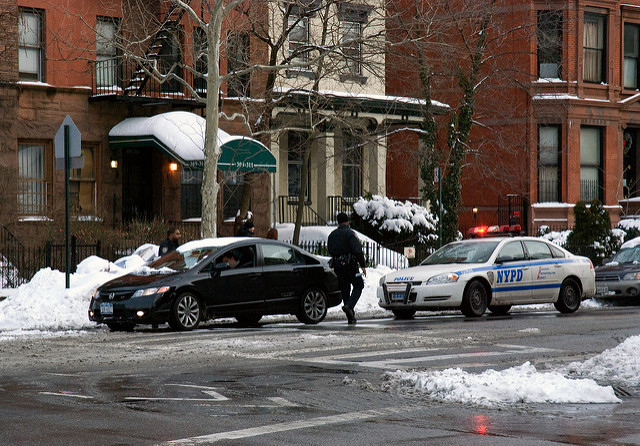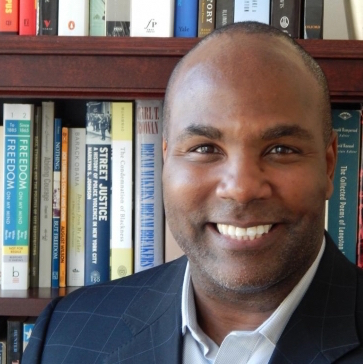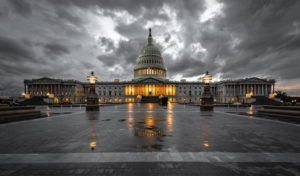
New York legislation that limited the reach of stop-and-frisk provides insight for lawmakers today.
“I would do stop-and-frisk,” candidate Donald Trump reportedly stated during the 2016 presidential campaign. “In New York City it was so incredible, the way [stop-and-frisk] worked.”
Trump’s comments seemed largely driven by the assumption that stop-and-frisk will maintain law and order. He argued this approach to policing had been very successful under former New York City Mayors Rudolph Giuliani and Michael Bloomberg.
Yet despite Trump’s campaign statements, as well as his Administration’s apparent focus on proactive policing and the eradication of crime, stop-and-frisk policies are a form of racialized social control that restricts the movement of minorities and signals that their persons can be seized, even when they have not committed a crime.
The New York City Police Department (NYPD) defines a so-called stop-and-frisk encounter as one where a police officer stops and questions pedestrians—and potentially searches them—if the officer “reasonably suspects” that the pedestrians may commit, or have already committed, a crime.
As an advisor to New York Governor David A. Paterson, I worked on state legislation that prevented the electronic warehousing of names and other identifying information of individuals who were stopped by the NYPD under its stop-and-frisk policy but were not charged with any crimes. In my view, recording the names and personal information of African-Americans and Latinos—who constituted an overwhelming majority of those who were stopped but not arrested by the NYPD—was tantamount to racial profiling.
NYPD’s stop-and-frisk policy had long been the subject of a hotly contested debate between civil liberties advocates and city officials. Civil liberties advocates argued that the NYPD’s stop-and-frisk policy not only violated the civil rights of those who were stopped, but also that the policy targeted racial minorities, not criminal behavior.
However, Commissioner Raymond W. Kelly and the Bloomberg Administration viewed the stop-and-frisk issue quite differently, claiming that the policy was key to maintaining law and order. As a result of legislation passed by the New York City Council in 2001, the NYPD established and maintained an electronic database of the names and addresses of individuals who were stopped under the stop-and-frisk policy, including individuals who were stopped but not charged with any crimes. By 2009, the names of millions of people the NYPD had stopped were recorded in this “stop-and-frisk” database.
In spite of the controversy surrounding the stop-and-frisk database, Mayor Bloomberg and Commissioner Kelly claimed the database was necessary because detectives relied on it for investigations and to arrest suspects. Commissioner Kelly met with Governor Paterson on at least two occasions about the stop-and-frisk database. In order to convince Governor Paterson that the electronic database was an essential anticrime tool, Commissioner Kelly presented a file containing 175 names from the database that had ended in arrest. The file, according to Kelly, provided irrefutable evidence on the effectiveness of the city’s proactive policing strategy.
But a thorough analysis of the file by the Paterson Administration revealed the absence of a direct—or causal—relationship between the names from the stop-and-frisk database and the claims made by the NYPD. The analysis further showed that in nearly every case where an arrest was made, the arrestee had a preexisting criminal record.
Evidence of a preexisting criminal record effectively nullified the argument for maintaining a stop-and-frisk database, and also proved to be the most significant element behind Paterson’s decision to sign into law legislation that made it illegal to electronically store the names, addresses, and other identifying information of people who were stopped but were not arrested. Additionally, an analysis of individuals’ race and location of stops in the stop-and-frisk database uncovered significant racial disparities, with Black and Latino communities being overwhelmingly targeted. Collectively, this evidence strongly suggested that a majority of stops under the NYPD policy were based on racial identity, rather than criminal activity.
Although Paterson’s legislation did not end the NYPD’s stop-and-frisk practices, it severely limited the purported value of the policy by barring the storage of identifying information of mostly African-American and Latino individuals who had not broken the law. The analysis supporting the legislation also raised important questions about the role of racial profiling in proactive policing and the state’s power to police the movement of individuals based largely on racial identity and unsubstantiated criminal activity.
Indeed, in 2013, a federal court concluded that NYPD’s stop-and-frisk practices established a “policy of indirect racial profiling.” Although the court did not order the NYPD to end stop-and-frisk, it did require “immediate changes to the NYPD’s policies.” Current New York City Mayor Bill de Blasio has also spoken out about decreasing the NYPD’s use of stop-and-frisk.
The complex relationship between racial identity, geography, and proactive policing has deep roots in American urban history. Scholars like Alex Elkins have traced the role of African-American migration into northern urban industrial centers to the rise of stop-and-search police strategies that have been used from the post-World War II era to the present. Elkins’ research reveals how allegations of criminal activity and stop-and-search tactics—which are the forerunners to stop-and-frisk—emerged as strategies to restrict the movement of African-Americans within black communities. His work effectively shows how aggressive stop-and-search tactics produced a systemic culture of constant harassment and police abuse against black bodies and triggered some of the most devastating urban race riots during the 1960s. The effects of this history can been seen in recent urban uprisings associated with the deaths of Trayvon Martin, Michael Brown, Eric Garner, Philando Castile, Sandra Bland, and Freddie Gray.
In the current era of alarm about global terrorism, the unprecedented decision by the Paterson Administration to bar the storage of identifying information may appear counterintuitive. However, counterterrorism and anticrime agendas are not the only considerations that should guide law enforcement. Indeed, the complex history of racist policing, as evidenced by the Massachusetts Supreme Judicial Court’s recent decision that African-Americans in certain situations are justified in running from police, as well as the movement to abolish mass incarceration and other deleterious effects caused by the war on drugs, are equally critical. In these contexts, actions like those taken by the Paterson Administration are consistent with national trends to preserve American democracy by protecting civil liberties and eliminating racist policing.
This essay is part of a fifteen-part series, Regulating Police Use of Force.




